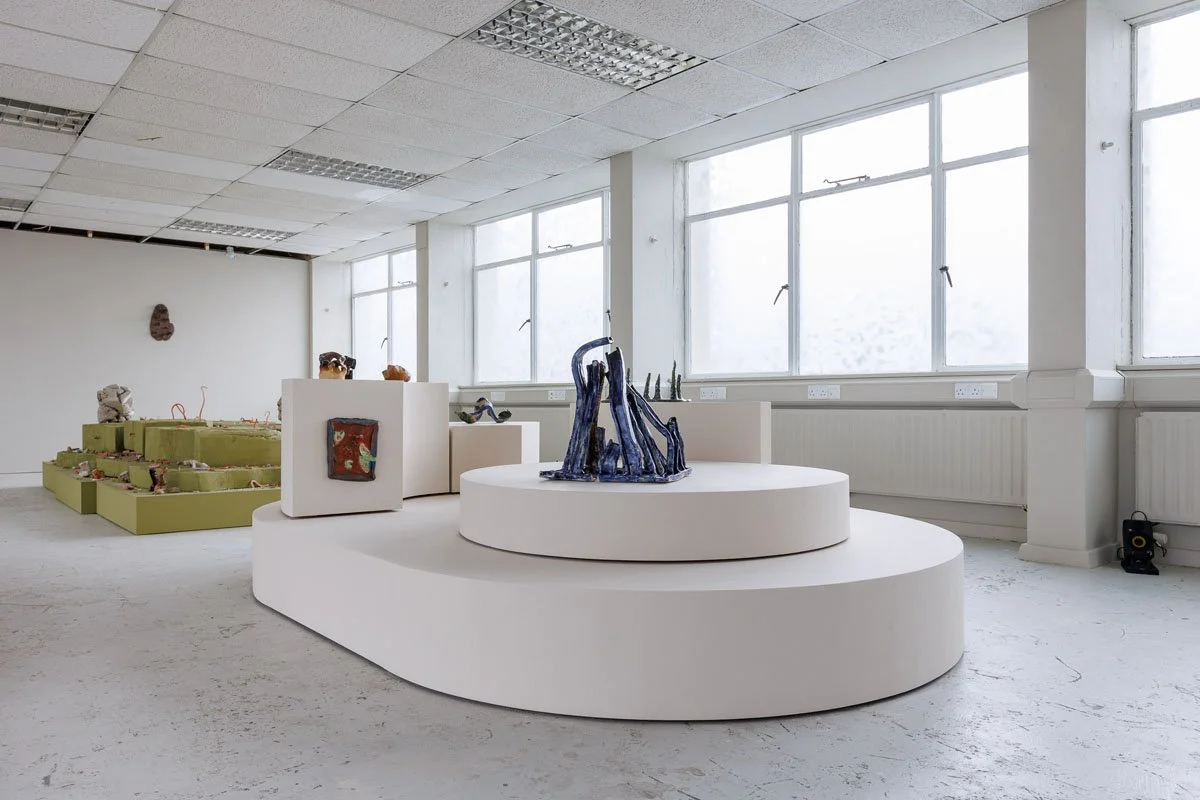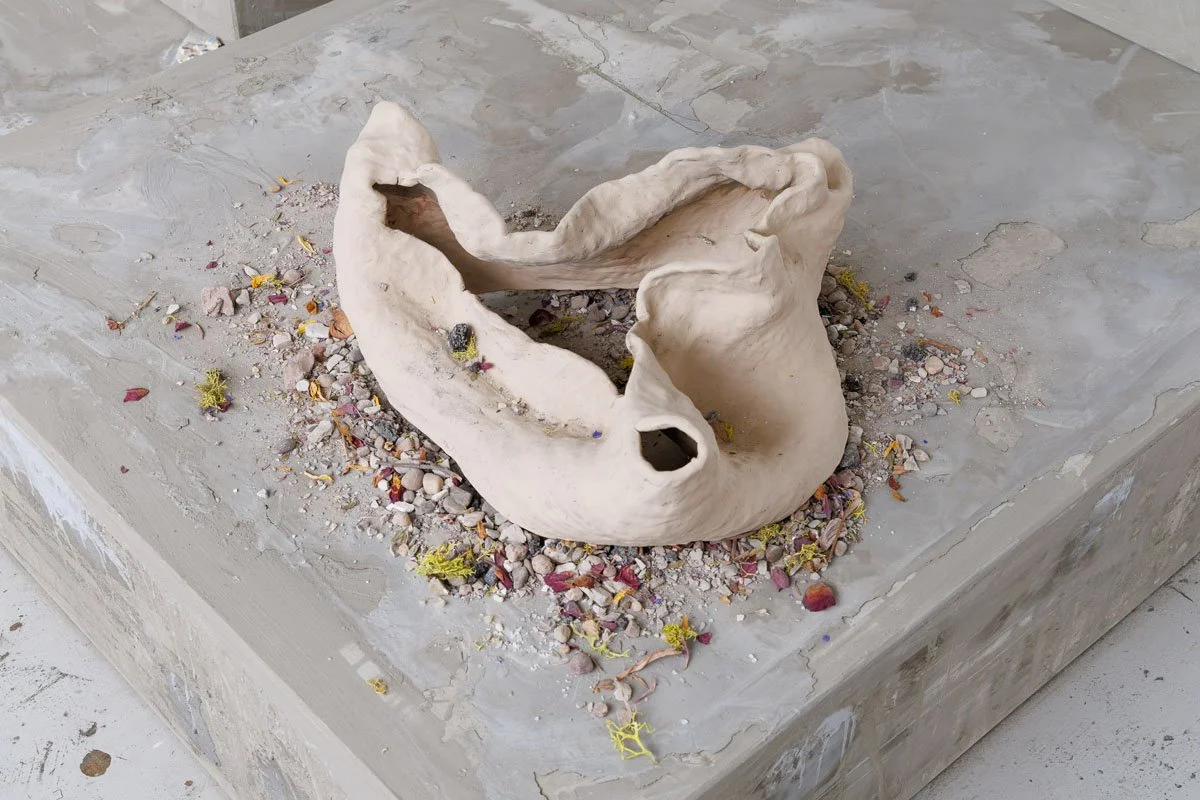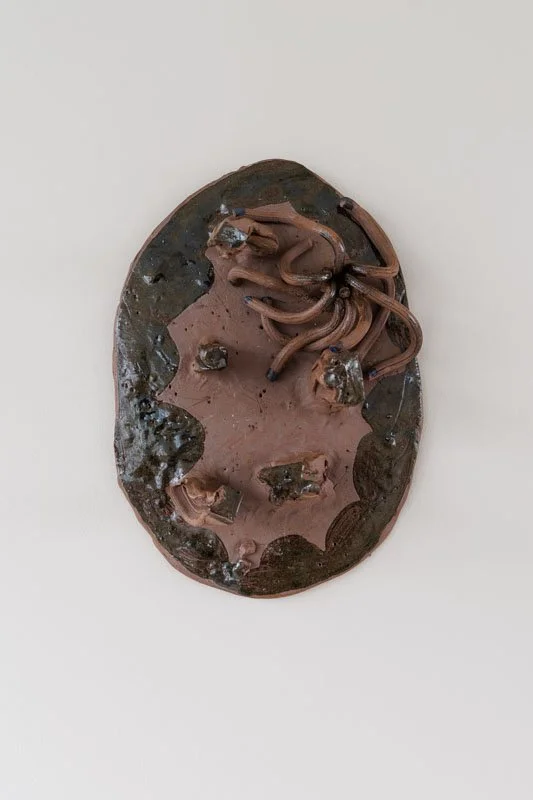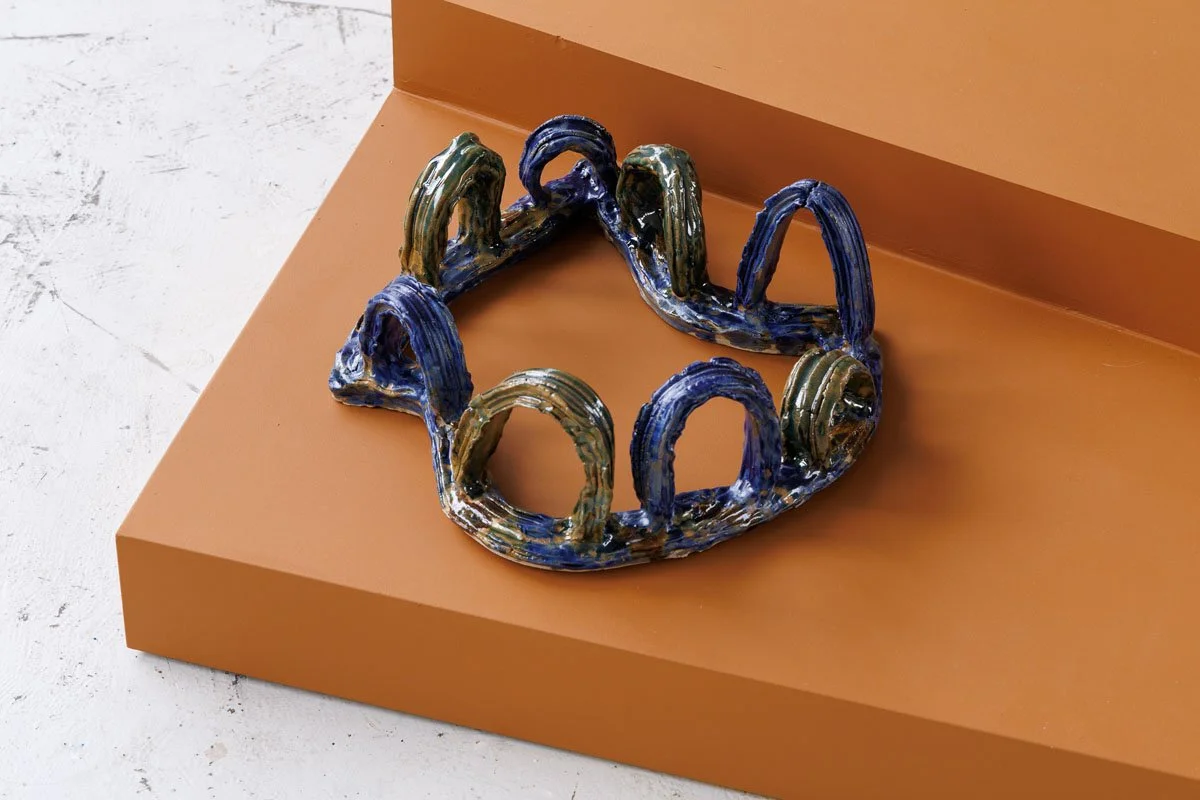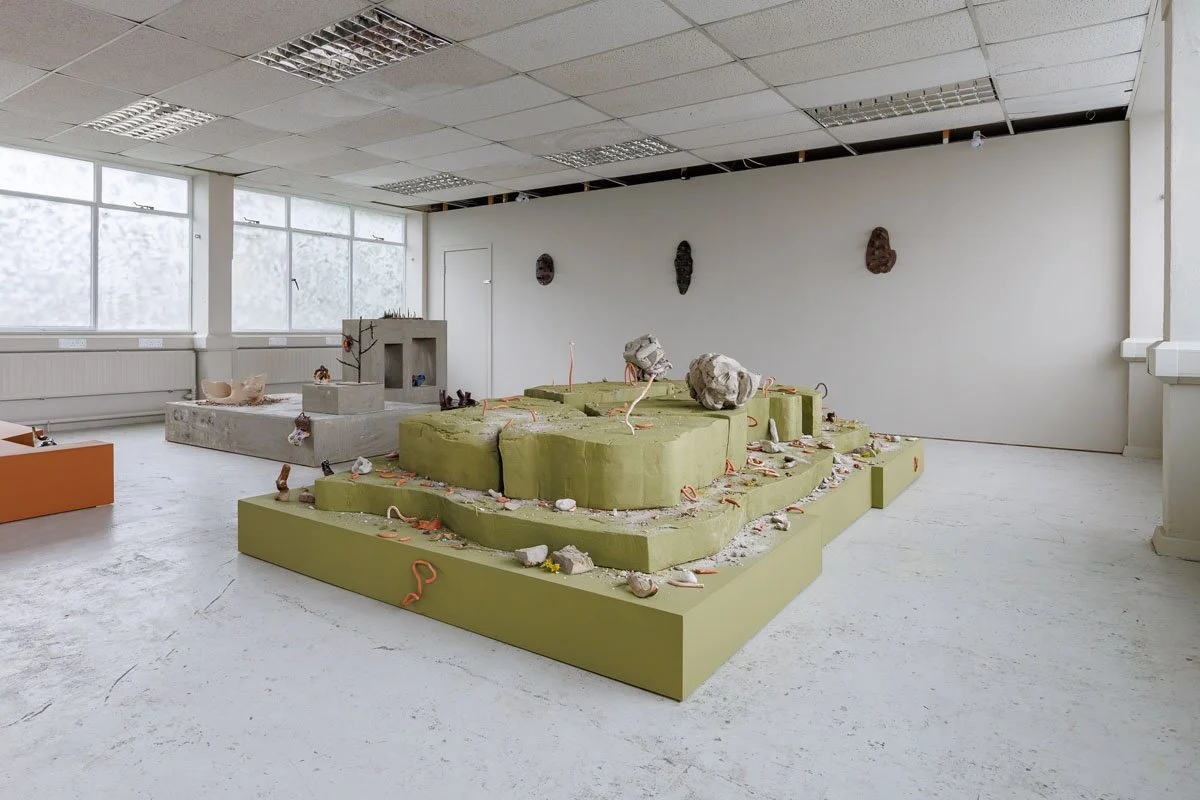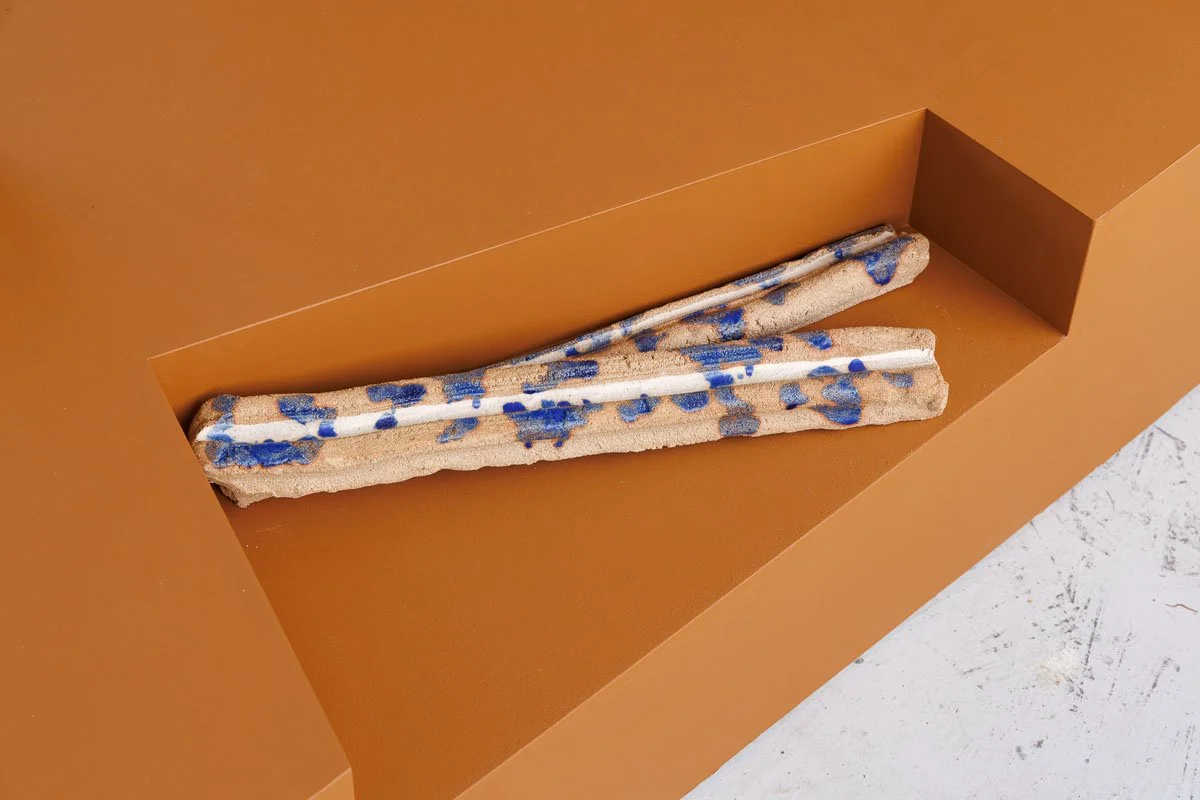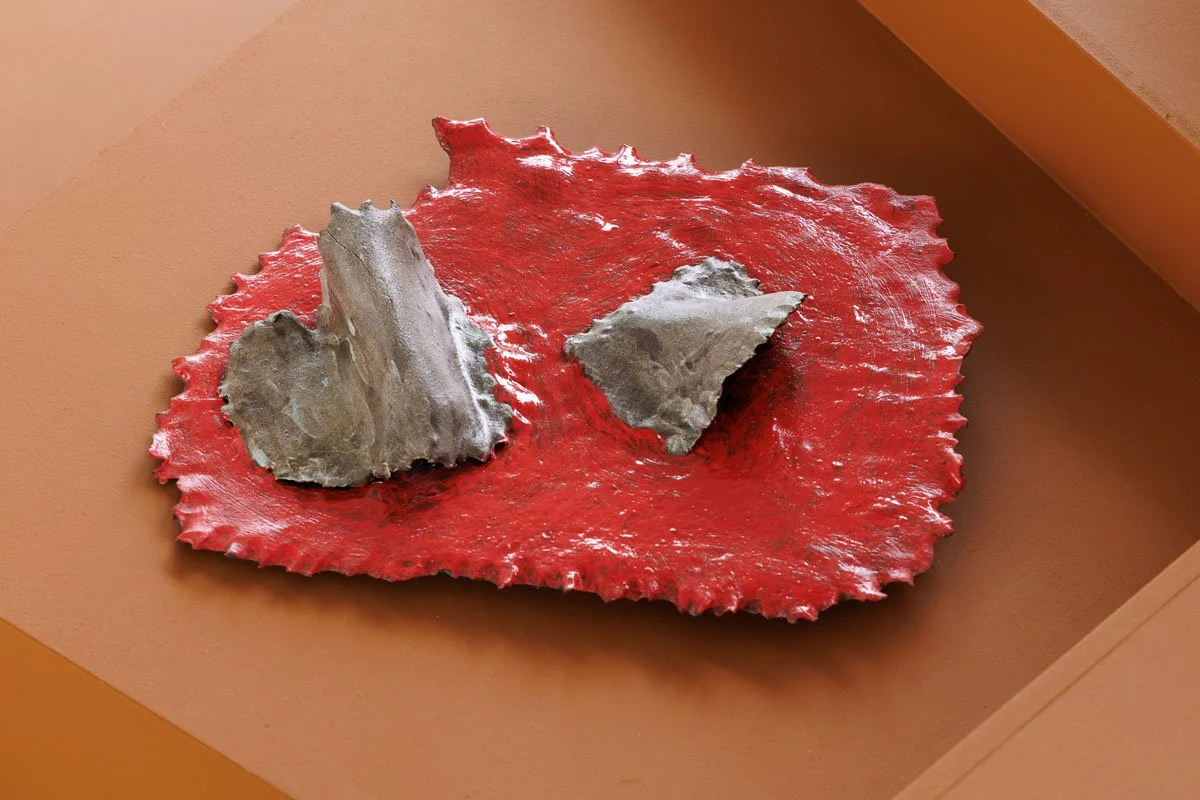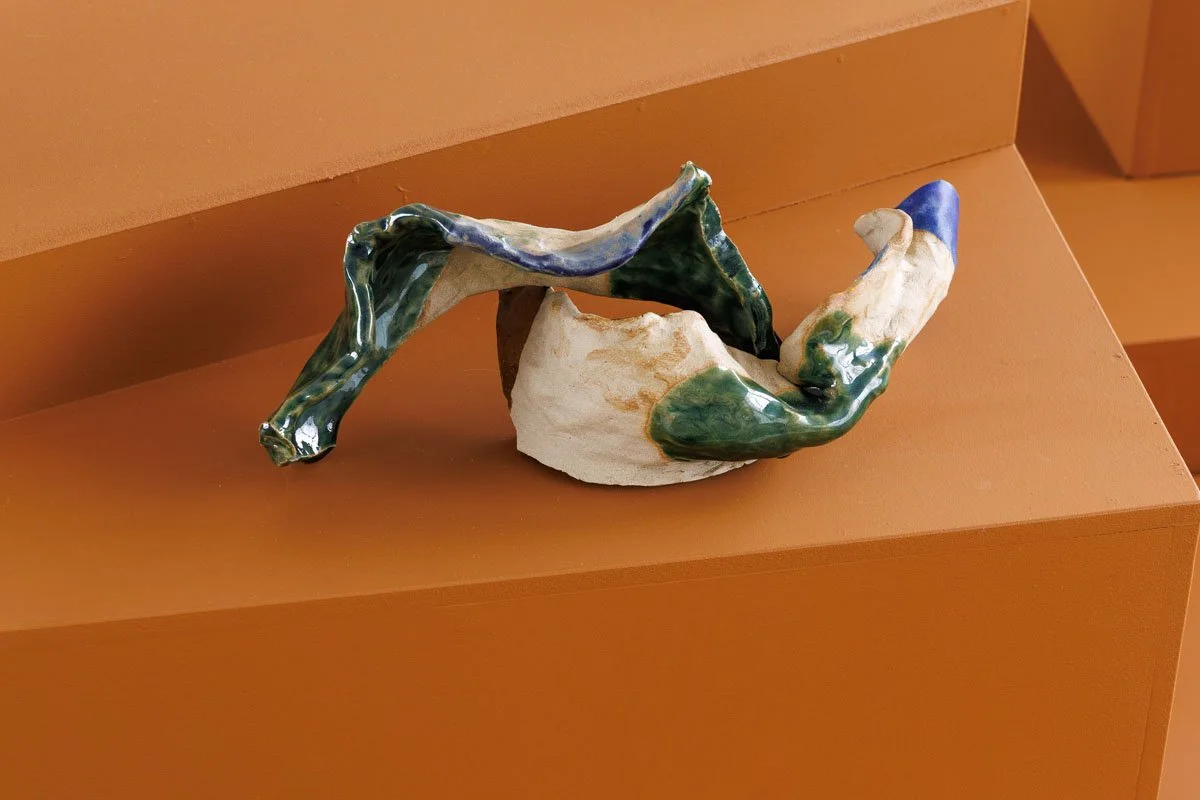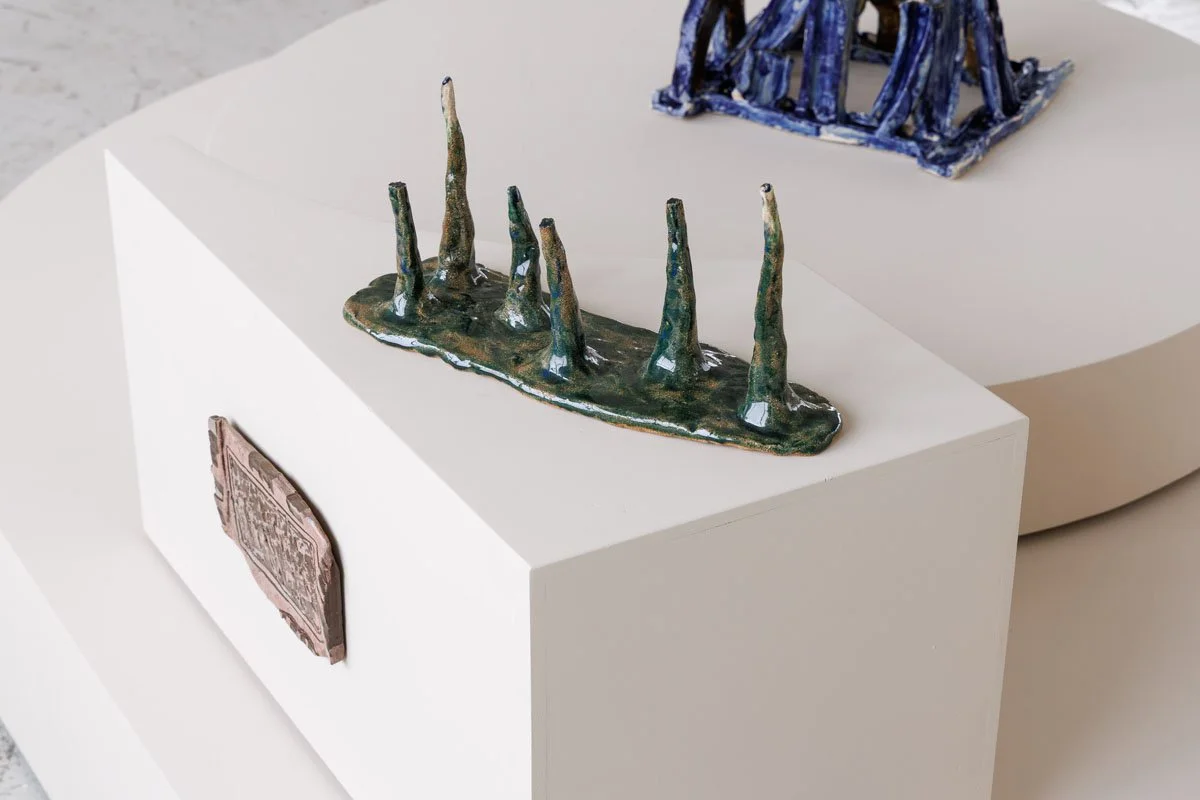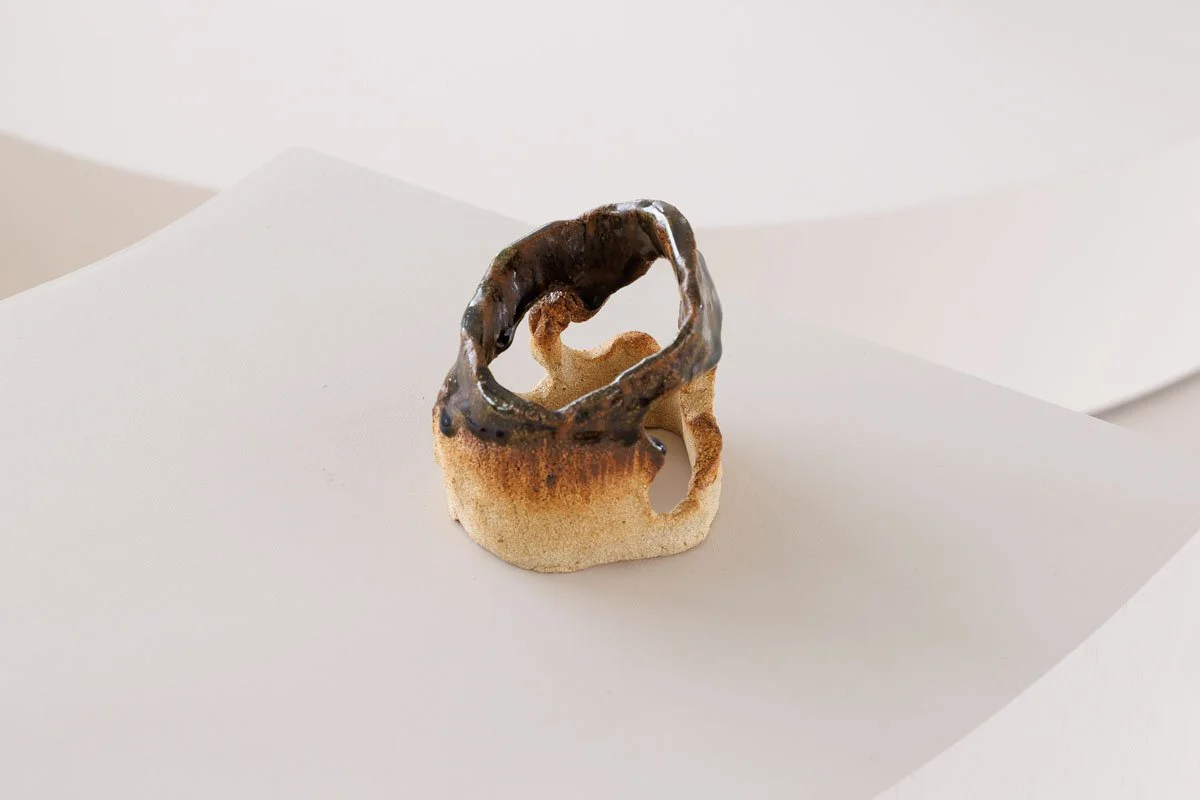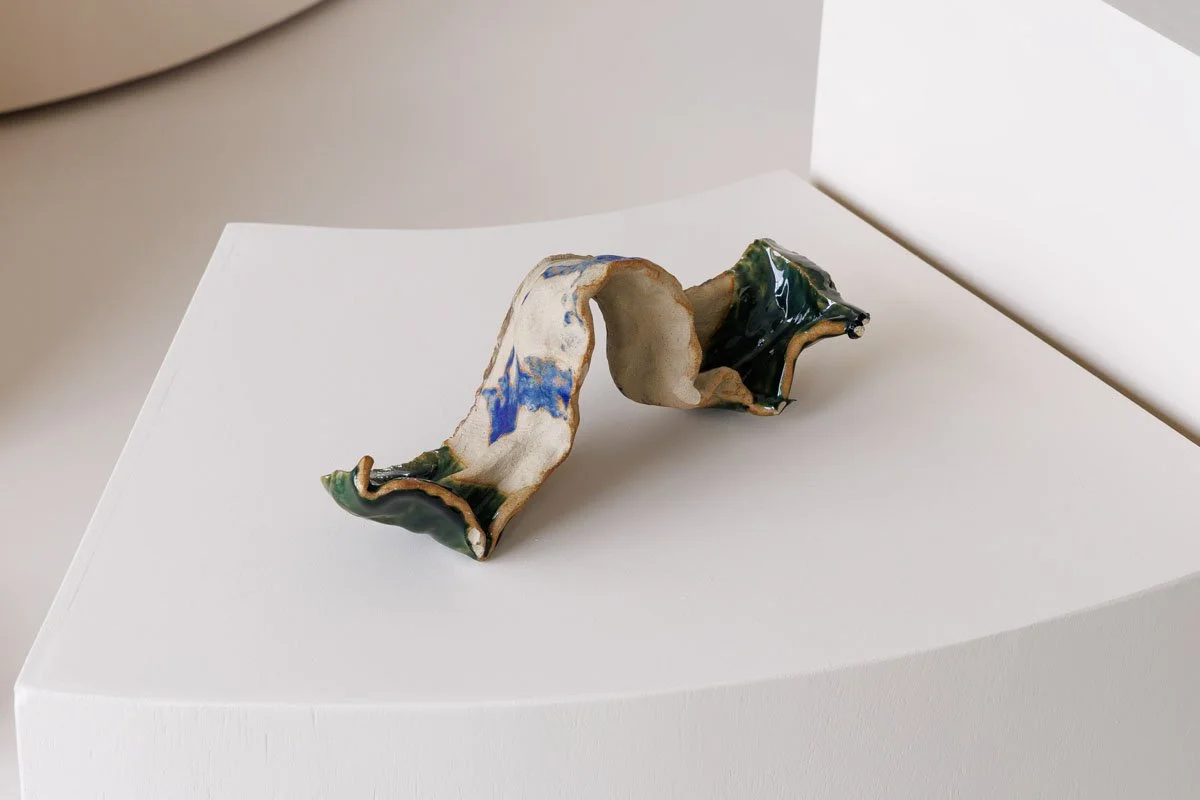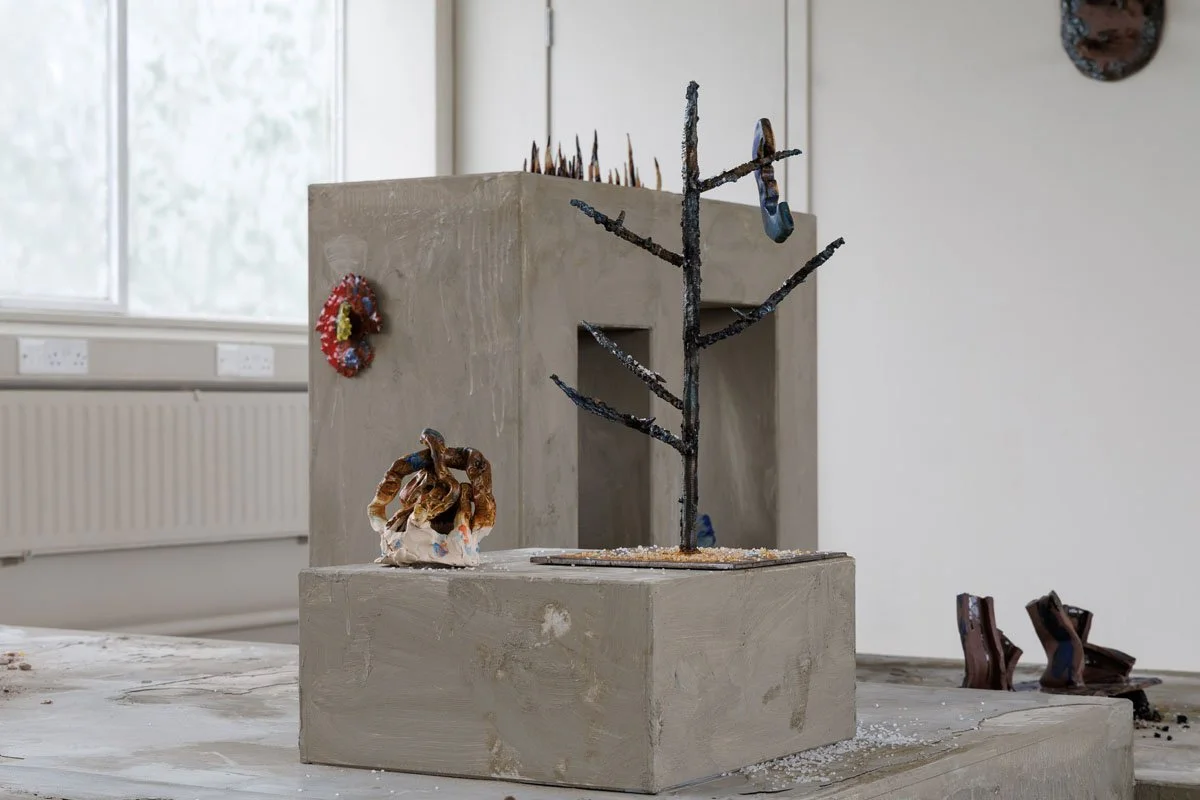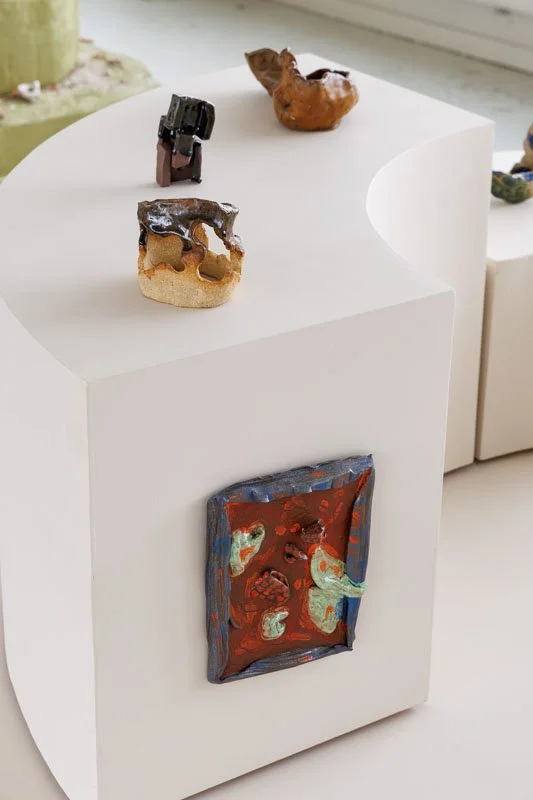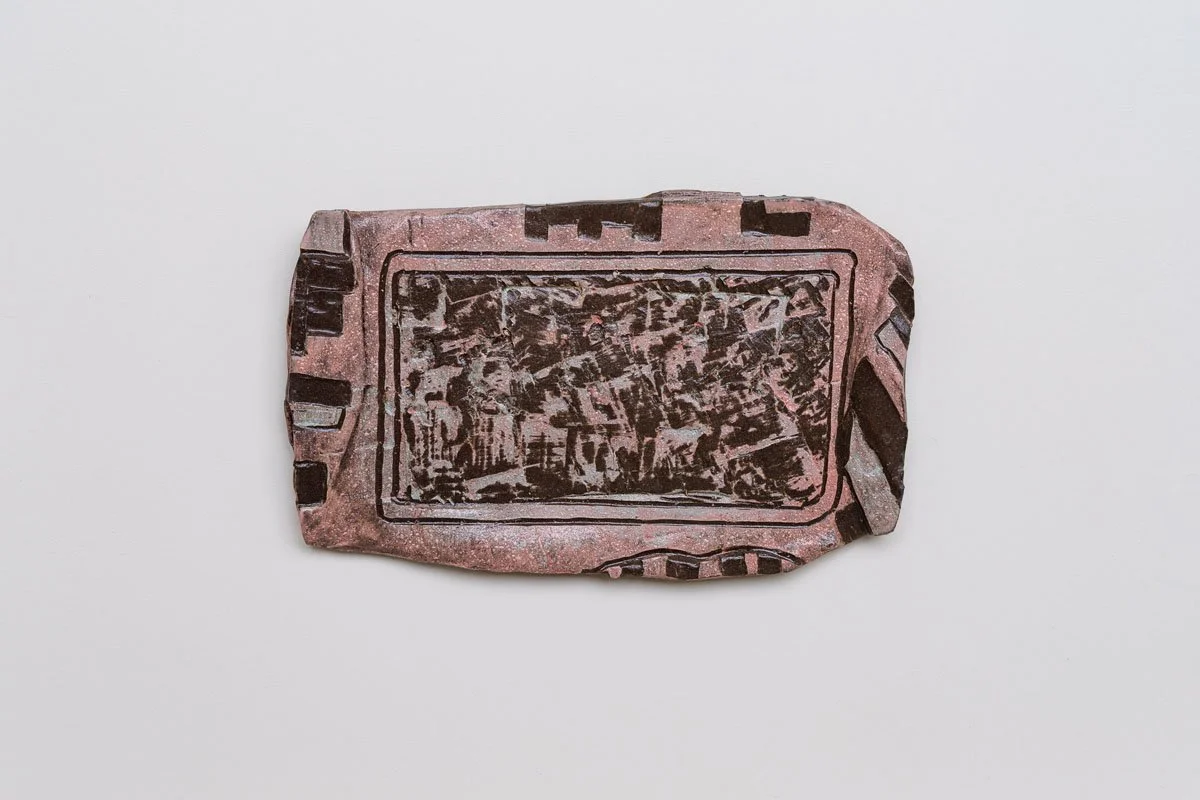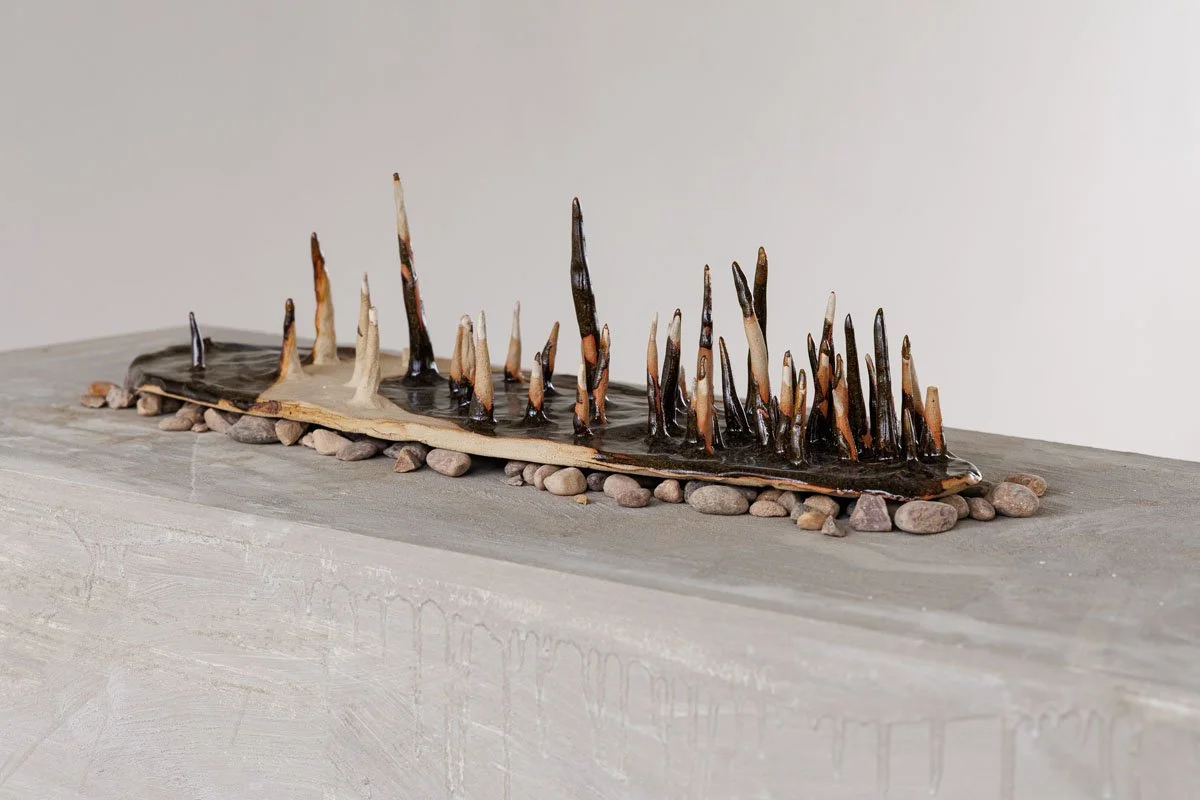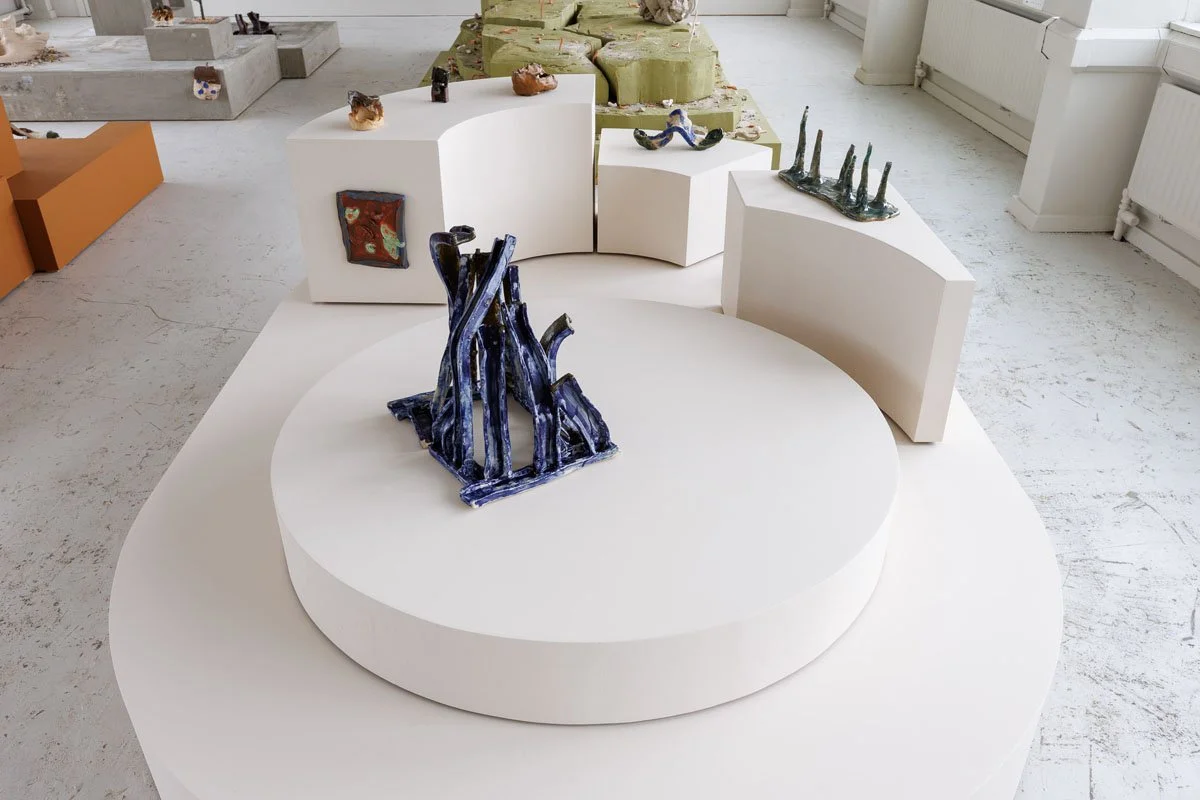Four-fold Reverie
a major solo installation by Manchester-based artist Pippa Eason, curated by PINK Director Katy Morrison.
All images courtesy of Jules Lister.
Developed following a DYCP award from Arts Council England, and kindly supported by The Haworth Trust, Four Fold Reverie explores the entanglements of body, space, and emotion through clay, light, sound, and multisensory spatial design. Rooted in Eason’s lived experience of neurodivergence and body dysmorphia, the installation unfolds across four immersive environments that each operate as a metaphor for a distinct state of being.
The installation spans four interconnected spaces, each forming a quadrant of embodied experience. Through these environments, the artist gives form to states of instability, self-perception, and sensory entanglement. At the core of Four-fold Reverie is Eason’s fascination with the number four and its associations with structure, embodiment, and transformation. This interest in cyclical patterns and resonance shapes the exhibition’s sculptural and spatial logic.
Central to the installation is a series of new ceramic sculptures, developed over a 12-month research and development period in collaboration with Florrie Andrews (Clay Studio, Stretford) and Joe Hartley (Yellowhammer, Stockport). This marks the first time Eason has worked professionally with ceramics, expanding her practice into material processes that demand slowness, tactility, and care. Her approach is rooted in hand-building techniques such as coiling and extrusion, embracing a process-led methodology that resists aesthetic perfection. The resulting forms are cracked, textured, and intentionally unstable; works that speak not to resolution, but to rawness, imperfection, and ongoing transformation. This return to material truth places value on presence over product, and on sensation over surface.
A bespoke film work, created in collaboration with designer Nick Booton, runs in parallel with the sculptural installation, layering imagery of urban decay with natural landscapes. Through slow motion, close-ups, and glitch aesthetics, the film meditates on the porous boundaries between body, material, and environment. Hands shaping clay, bodies submerged in mud, and flickers of artificial and natural light evoke transformation, erosion, and the vulnerability of becoming.
As with ceramics, film is a new medium in Eason’s practice; introduced not as an add-on, but as an integral extension of her material inquiry. Its inclusion marks a broader shift toward an interdisciplinary language of making- one that allows feeling to guide form. Through moving image, Eason begins to develop a visual vocabulary capable of holding complexity, instability, and contradiction; a vocabulary shaped by lived experience and driven by the desire to translate sensation into structure.
A newly commissioned responsive sound piece by Leeds based composer Jia Lee activates the installation, heightening its affective register and allowing each space to breathe, shift, and resonate in real time. Meanwhile, the architectural intervention that shapes and grounds the installation has been designed and delivered in close collaboration with master craftsman Johnny Billinge (Sawn), whose expertise brings a level of spatial precision and sensitivity essential to the work’s physical and emotional integrity.
Four-fold Reverie is a meditation on the politics of making, the poetics of material, and the necessity of self-reflection. Through clay, light, sound, and space, Eason offers a framework for feeling; an architecture of emotion that asks not for answers, but for presence; not for resolution, but for the courage to dwell in uncertainty, to live with complexity, and, at last, begin to feel at ease in one’s own skin.

